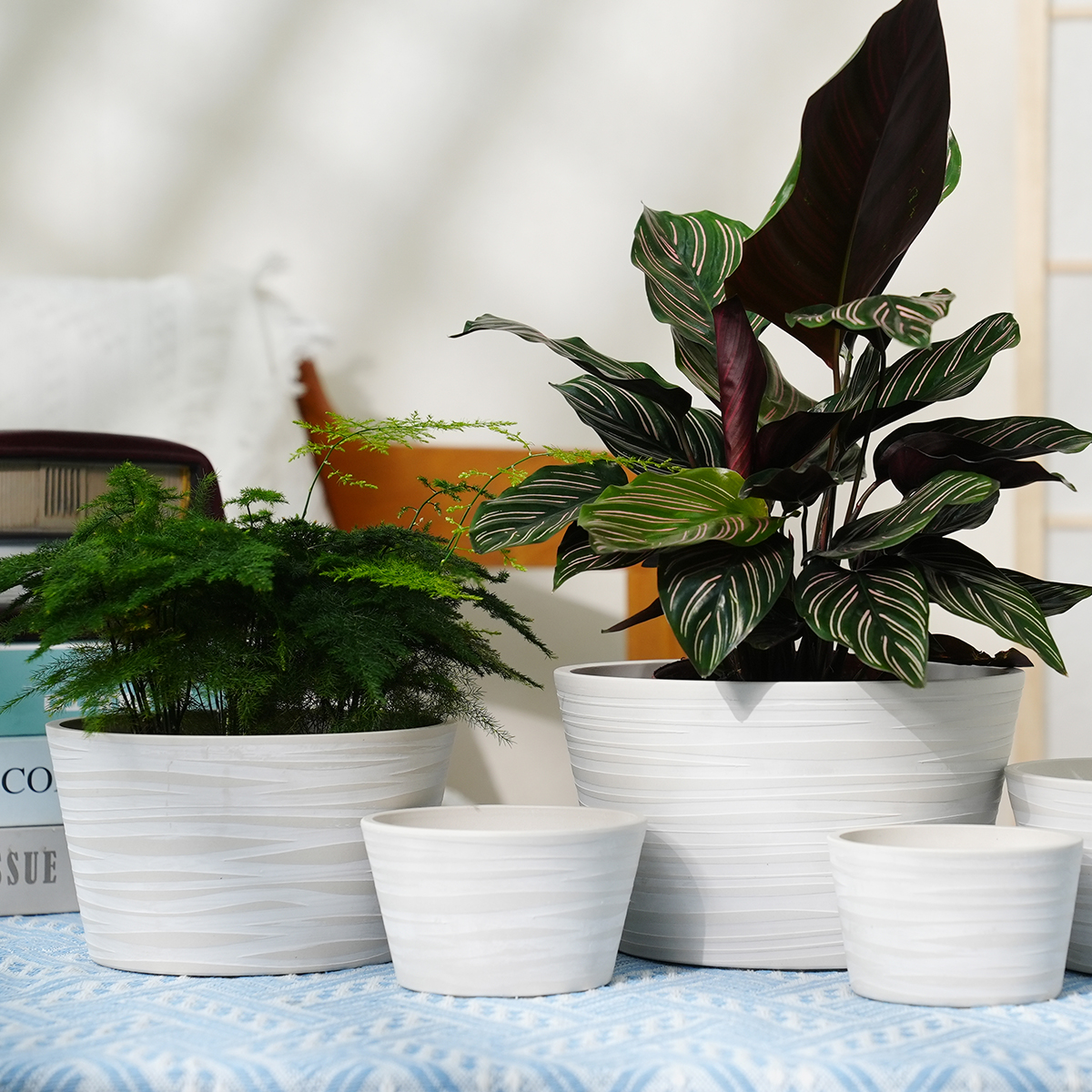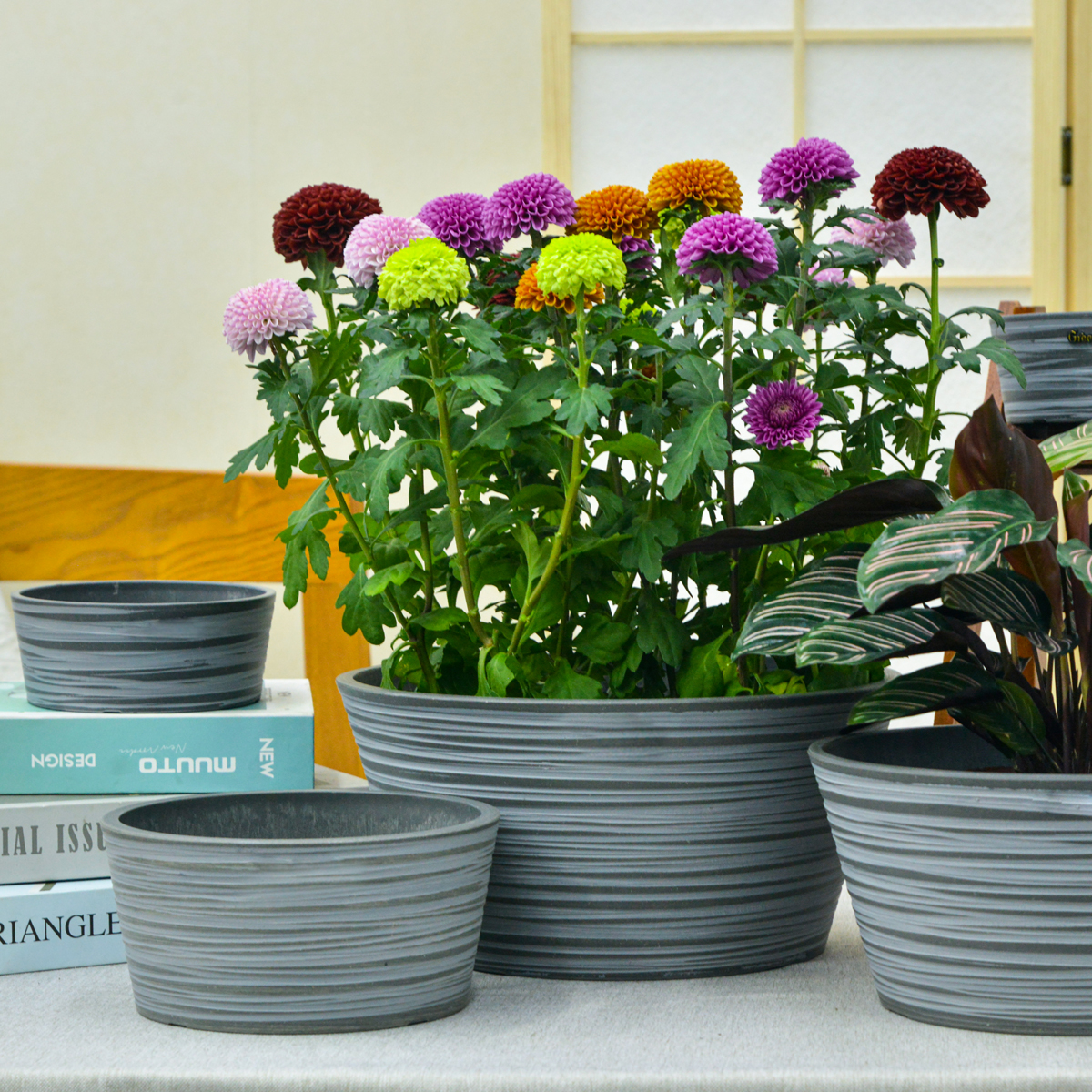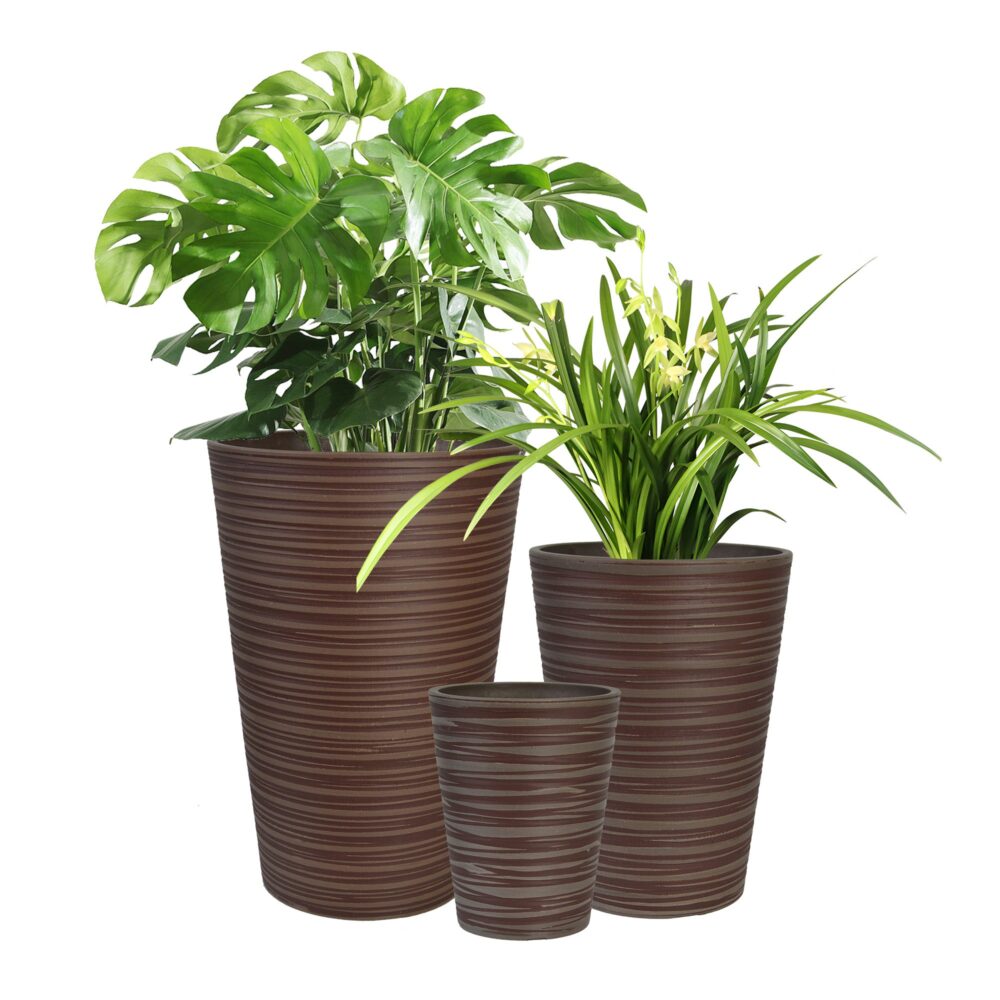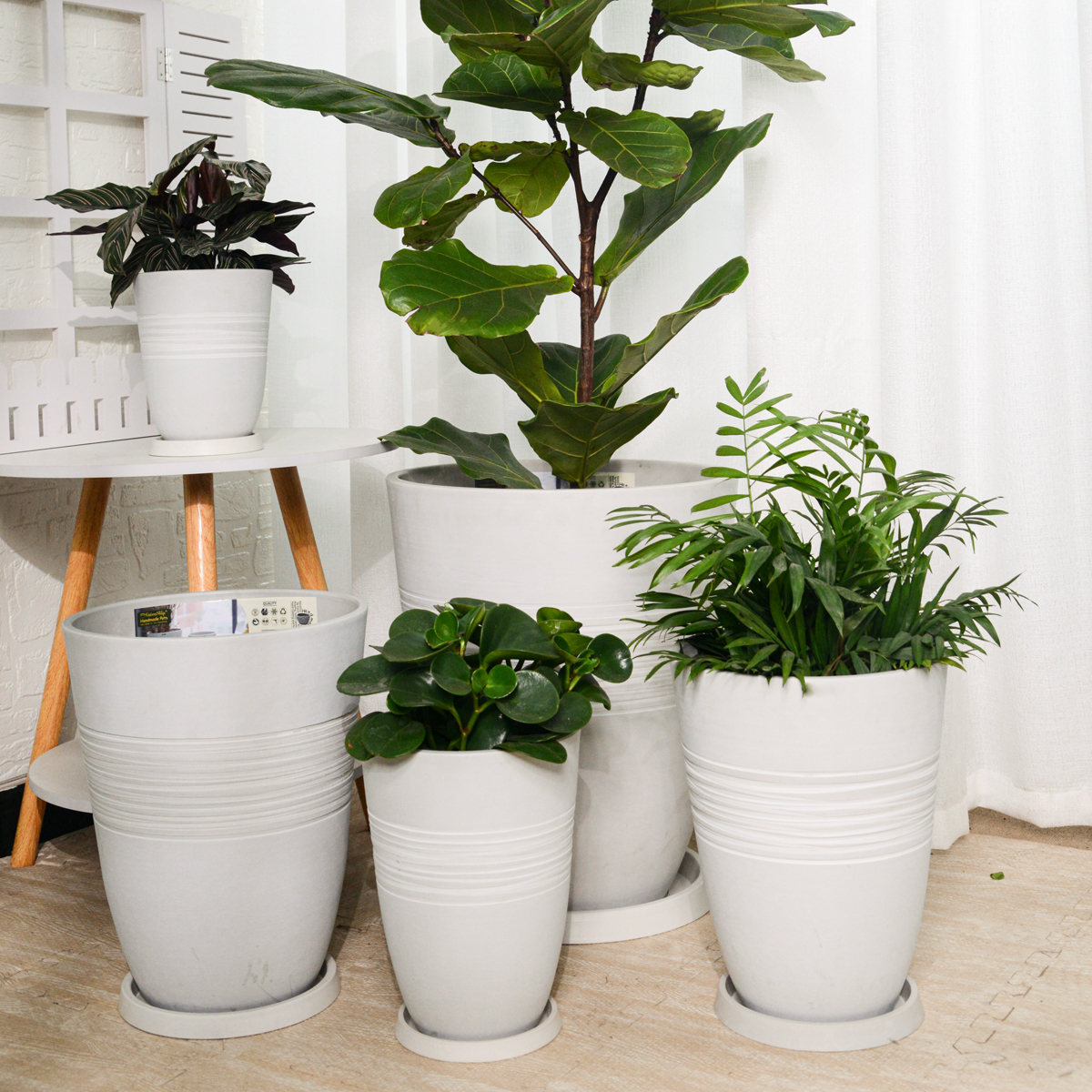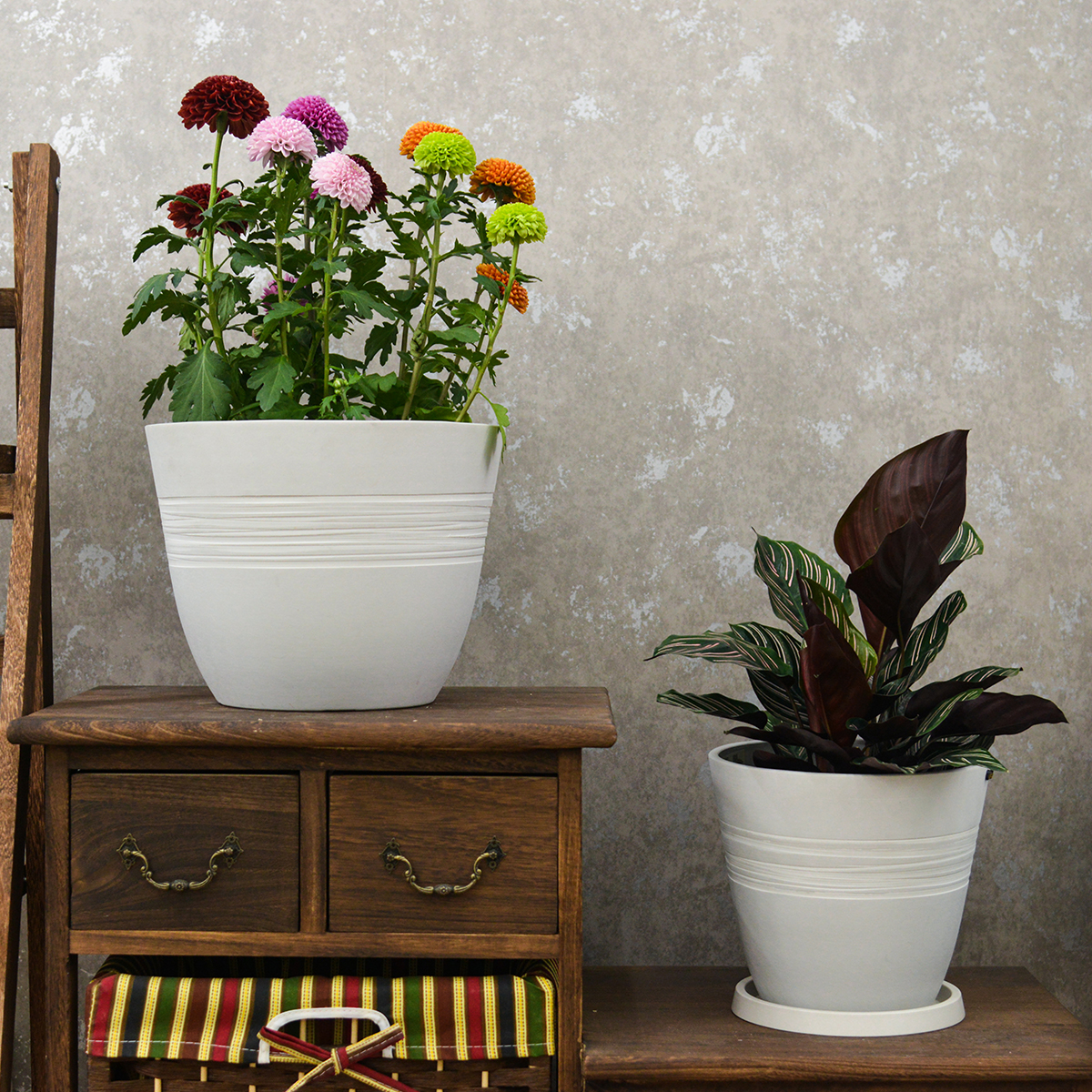What Material is Best for Outdoor Planters? Choosing the Right Home for Your Plants
Selecting the perfect outdoor planter is more than just an aesthetic choice; the material you choose plays a significant role in your plants’ health, the planter’s durability, and your overall gardening experience. With a wide array of options available, from classic terracotta to modern composites, deciding on the “best” material can feel overwhelming. This guide will explore popular outdoor planter materials, outlining their pros and cons to help you make the right decision for your gardening needs.
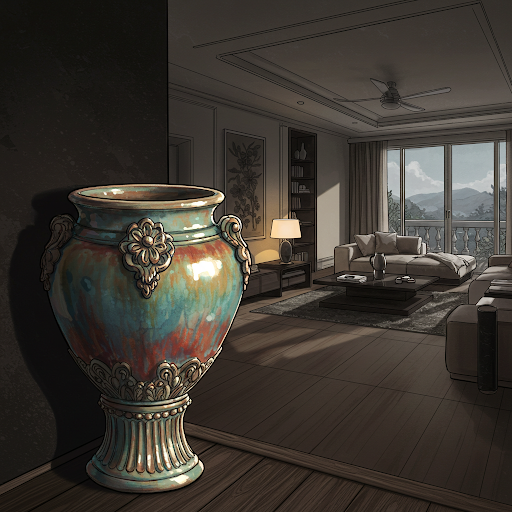
Understanding the Factors to Consider
Before diving into specific materials, it’s crucial to consider a few key factors that will influence your choice:
- Climate: Your local climate significantly impacts planter material performance. Consider factors like temperature fluctuations, frost, heavy rain, and intense sun.
- Plant Needs: Different plants have varying moisture requirements. Some materials retain more water than others.
- Durability: How long do you want the planter to last? Some materials are more resistant to cracking, fading, and damage than others.
- Weight: Consider the weight of the filled planter, especially if you plan to move it around.
- Aesthetics: The planter should complement your outdoor décor and personal style.
- Budget: Prices vary significantly between different materials.
Popular Outdoor Planter Materials: Pros and Cons
Let’s explore some of the most common materials used for outdoor planters:
| Material | Pros | Cons | Best For |
| Terracotta | Classic look, porous (allows for good airflow and drainage), relatively inexpensive. | Prone to cracking in freezing temperatures, can dry out quickly (requiring more frequent watering), heavier than plastic. | Mediterranean-style gardens, warmer climates, plants that prefer drier soil. |
| Plastic | Lightweight, durable, affordable, available in various styles and colors, good moisture retention, resistant to frost and cracking. | Can look less natural or high-end, may fade or become brittle in intense sun over time, some types may not be as environmentally friendly. | Budget-conscious gardeners, those who need lightweight options, a wide variety of styles, and good moisture retention. |
| Ceramic/Glazed | Attractive, available in many decorative styles and colors, more durable than terracotta, good moisture retention. | Can be expensive, heavy, and susceptible to cracking in extreme temperature fluctuations. | Adding a touch of elegance and style, plants that prefer consistent moisture, areas where planters are less likely to be moved frequently. |
| Wood | Natural and warm aesthetic, can be stained or painted, offers good insulation for roots. | Susceptible to rot, warping, and insect damage (requires treatment and maintenance), can be heavy. | Rustic or natural garden styles, larger plants, gardeners willing to perform regular maintenance. Cedar and redwood are more naturally resistant to decay. |
| Concrete | Extremely durable and long-lasting, stable and heavy (good for windy areas), can be molded into various shapes and sizes. | Very heavy and difficult to move once filled, can be expensive, may stain over time, can sometimes leach lime into the soil (affecting pH). | Large, permanent installations, windy locations, contemporary or industrial garden designs, plants that tolerate alkaline soil. |
| Metal | Durable, modern and industrial look, can be lightweight (aluminum) or very sturdy (steel), various finishes available. | Can heat up quickly in direct sun (potentially harming roots), some metals can rust (unless treated), can be more expensive. | Contemporary or industrial garden styles, balconies, patios, gardeners seeking a durable and unique aesthetic. Consider powder-coated aluminum or galvanized steel for better rust resistance. |
| Fiberglass | Lightweight yet durable, resistant to frost and cracking, available in many styles and finishes (often mimicking other materials), good insulation, relatively expensive. | Can sometimes look less natural than real materials, can be more expensive than plastic or terracotta. | Gardeners seeking a lightweight and durable option that mimics the look of other materials, good for balconies and rooftops. |
| Stone/Cast Stone | Very durable and long-lasting, natural and elegant appearance, heavy and stable. | Very expensive, extremely heavy and difficult to move, can be porous and may absorb water, potentially leading to cracking in freezing temperatures (depending on the type). | Formal gardens, creating a sense of permanence and grandeur, plants that thrive in stable root environments. |
| Composite | Often made from recycled materials, lightweight, durable, resistant to rot, insects, and fading, available in various styles. | Can sometimes be more expensive than basic plastic or terracotta, the “look” can vary in quality depending on the brand. | Eco-conscious gardeners, those seeking a low-maintenance and durable option that combines the benefits of multiple materials. |
Making the Right Choice for Your Outdoor Planters
Ultimately, the best material for your outdoor planters depends on your specific needs and preferences. Consider the following steps to guide your decision:
- Assess Your Climate: Understand the temperature extremes, rainfall, and sunlight exposure in your area.
- Evaluate Your Plants’ Needs: Research the specific requirements of the plants you intend to grow, particularly regarding moisture retention and drainage.
- Consider Your Budget: Determine how much you are willing to spend on planters.
- Think About Aesthetics: Choose a material and style that complements your outdoor space.
- Factor in Practicality: Consider the weight and ease of maintenance.

By carefully evaluating these factors and understanding the pros and cons of different outdoor planter materials, you can select the perfect homes for your plants, ensuring their health and beauty for years to come.
HS
By greenship|2024-08-13T06:45:17+00:00August 13, 2024|Categories: Hand-carving Series|
11THD
By greenship|2024-08-13T02:52:20+00:00August 13, 2024|Categories: Hand-carving Series|
Modern Plant Pots with Drainage – Indoor & Outdoor Use (6″ Widths)
By greenship-seo|2025-04-10T06:29:43+00:00February 6, 2025|Categories: Hand-carving Series|Tags: Decorative Flower Pots|
KC2-11VH
By greenship|2024-08-16T06:19:28+00:00August 16, 2024|Categories: Hand-carving Series|
KC2-11V
By greenship|2024-08-16T05:39:50+00:00August 16, 2024|Categories: Hand-carving Series|
GreenShip 27inch Tall Planters for Porch, Large Outdoor Planter Pots with Drainage Hole
By greenship-seo|2025-04-10T06:27:21+00:00April 7, 2025|Categories: Hand-carving Series|Tags: Decorative Flower Pots|

